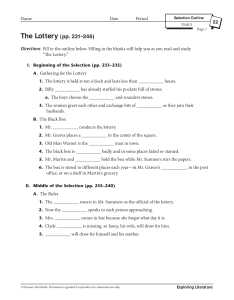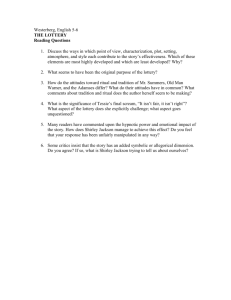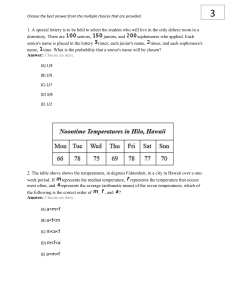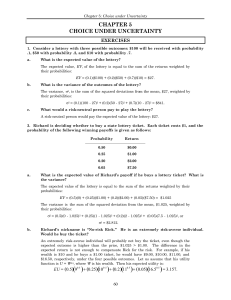Quiz3
advertisement
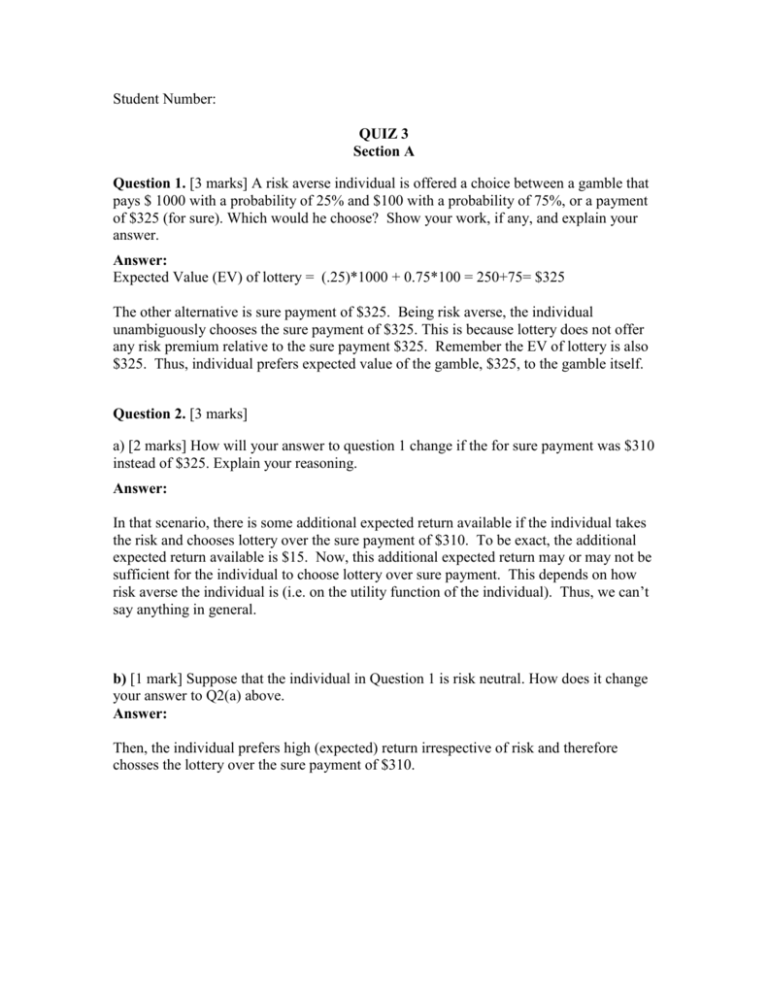
Student Number: QUIZ 3 Section A Question 1. [3 marks] A risk averse individual is offered a choice between a gamble that pays $ 1000 with a probability of 25% and $100 with a probability of 75%, or a payment of $325 (for sure). Which would he choose? Show your work, if any, and explain your answer. Answer: Expected Value (EV) of lottery = (.25)*1000 + 0.75*100 = 250+75= $325 The other alternative is sure payment of $325. Being risk averse, the individual unambiguously chooses the sure payment of $325. This is because lottery does not offer any risk premium relative to the sure payment $325. Remember the EV of lottery is also $325. Thus, individual prefers expected value of the gamble, $325, to the gamble itself. Question 2. [3 marks] a) [2 marks] How will your answer to question 1 change if the for sure payment was $310 instead of $325. Explain your reasoning. Answer: In that scenario, there is some additional expected return available if the individual takes the risk and chooses lottery over the sure payment of $310. To be exact, the additional expected return available is $15. Now, this additional expected return may or may not be sufficient for the individual to choose lottery over sure payment. This depends on how risk averse the individual is (i.e. on the utility function of the individual). Thus, we can’t say anything in general. b) [1 mark] Suppose that the individual in Question 1 is risk neutral. How does it change your answer to Q2(a) above. Answer: Then, the individual prefers high (expected) return irrespective of risk and therefore chosses the lottery over the sure payment of $310. Question 3. [4 marks] Consider the problem of optimal choice of consumption and leisure by a consumer. There are two goods C (for Composite good) and L (for leisure). The consumer’s weekly income is given by w*(168-L), where w is the wage per hour of work and L is the number of hours of leisure consumed per week. The price of C is Pc per unit. The utility function of the consumer is given by U C * L . a) [1 mark] Write down the budget line of the consumer in terms of C, L, Pc and w. Answer: Budget line is: Pc C w(168 L) or Pc C wL 168 * w b) [2 marks] Given that w=$2 and Pc 4 . Solve for the optimal choice of C and L. Answer: MU L C PL w MU C L PC 4 2C L Using the budget line from part a), we have 2 equations and two unknowns. The solution is: C 42 and 2C L L 84 c) [1 mark] If w decreases to $1, how does optimal choice of C and L changes? Answer: In that case, we have MU L C PL 1 MU C L PC 4 4C L Using the budget line from part a), we have 2 equations and two unknowns. The solution is: C 21 and 4C L L 84






